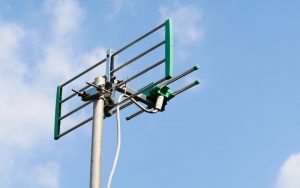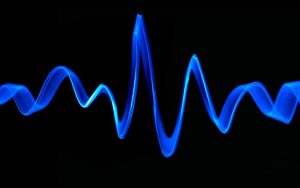A common question for many ham radio operators is that of how far can they get with the amount of power that they are using for transmissions.
This becomes even more common and perhaps important for newcomers to the hobby who may be restricted to lower power levels or for those who like to set themselves challenges by operating with minimal amounts of transmission power.
It is possible to transmit great distances on 10 watts of power but this depends on several factors such as the band that you are transmitting on, the type and quality of the antenna that you are using, your location, the weather and the propagation conditions at the time.
How far can you transmit on 10 watts?
When conditions are favourable then the opportunity for significant distances exists.
I’ve enjoyed conversations with other radio hams that have been several thousand miles away, while also experiencing good quality contacts that have been closer to home, hundreds of miles.
Why would you use low power levels such as 10 watts?
Many radio amateurs that are new to the hobby are restricted by their licence conditions to a maximum transmission power.
In the United Kingdom, for example, foundation level operators ( which is the entry level ham radio licence ) are only allowed to operate with a maximum of 10 watts.
There may also be restrictions as to the power levels that you are allowed to use placed on certain frequencies or bands and this can often occur when bands are shared with other services or users that are not ham radio operators.
It’s also possible that the equipment that you are using is low powered.
For example many portable, hand held transceivers will only output around 4 to 8 watts of power so, if you work with a hand held your power options are limited.
Using lower power levels is a challenge
Many radio hams also like to communicate using the minimum amount of power possible and, in fact many licensing bureaus that control amateur radio licences, encourage this as best practice.
The challenge of communicating over long distance, using lower levels of power, is an attraction to many operators as it takes more skill and thought than simply ‘cranking up the power’.
Other things that can affect how far will you get with 10 watts
The following factors should also be taken into consideration when trying to find the range of your transmissions.
– The frequencies you are transmitting on
– Your location – Gaining height with antennas, being closer to the sea or finding higher ground helps too.
– Antenna type and quality – More gain means more effective power for longer distance
– Local interference
– The quality of your equipment ( Antenna tuner, coaxial cable, connectors )
It’s generally said that 10 watts will get you around 100 to 150 miles in the right conditions but it really does depend on all of the variables mentioned above.
For example if you are operating on a frequency with low terrain or water between you and your contact and the weather conditions are good, you should expect to get a lot further.
If you are located in an area with very high ground between stations, this will again help you to achieve greater distances.
Is 10 watts enough power?
It is possible to make good quality contacts over reasonable distances using as little as 5 watts of power.
For many beginners, 10 watts is usually considered low power and an entry level operator will regularly use 20 or more watts to make themselves heard.
There is no such thing as a universal ‘minimum’ for ham radio but the general consensus is that you should aim for at least 20 watts of power on the output side if you wish to make your radio equipment suitable for more than local communication.
Final Words
As you can see, using 10 watts of power is a good way to get started in amateur radio and for making contacts over short distances.
It’s a great way of getting on the air and will allow you to begin your journey and learn more about the hobby while gaining experience.
Read Next
- What is amateur radio?
- Can a TV antenna be used for ham radio?
- How far can you talk on ham radio?
- What does VFO mean on a ham radio?
- Can I listen to ham radio online?
- Can ham radio interfere with tv reception?











